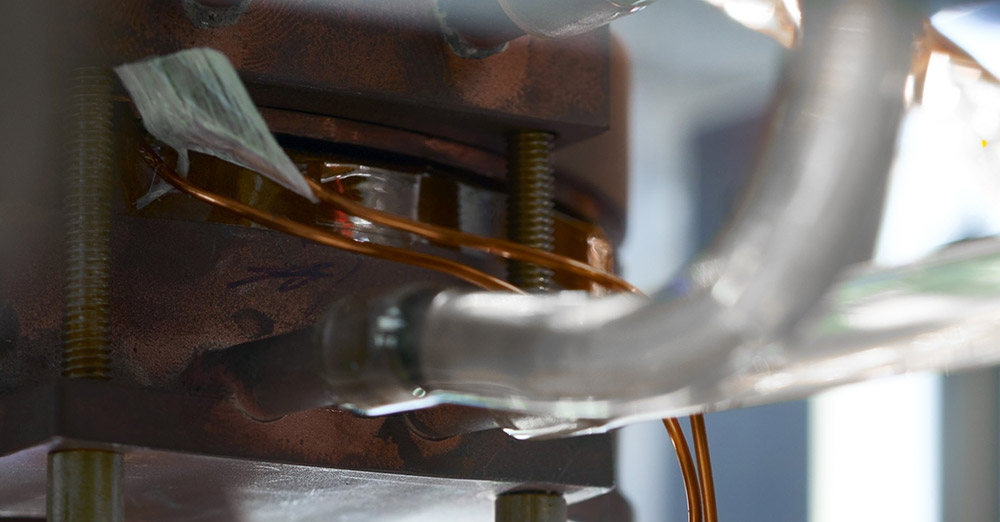New record: For the first time, physicists have successfully entangled atoms over 33 kilometers of fiberglass. The special thing about it: the entanglement was transmitted into photons, which were first converted into communication frequencies and then transmitted over an ordinary fiber-optic line. This is a new distance record for such a quantum connection — and an important step on the road to a quantum internet, the researchers report in the journal Nature.
Quantum networks are considered the communication channels of the future, because thanks to quantum physical phenomena such as entanglement and superposition, information can be transmitted instantly, not tampered with and over long distances. The first tests of quantum transmission over optical fibers, lasers, and even Satellites It was already successful. also first quantum networks With many users and Quantum modems It has already been developed.
The wavelength determines the range
However, when quantum information is transmitted in a glass fiber, the range is highly dependent on the wavelength of the entangled photons. In order to keep losses as low as possible and increase the distance between quantum nodes and quantum amplifiers, particles of light should be brought into the wavebands used by conventional communications as much as possible. Until now, however, most quantum nodes and memories emit light in the visible or near-infrared range.
The range is correspondingly short: “So far, transmission of well-defined signals with verifiable entanglement has been limited to optical fiber lengths of 1.7 km,” explain Tim van Lint of Ludwig Maximilian University of Munich (LMU) and colleagues. They have now developed a system that allows quantum information to be converted and transmitted over longer scales.
Atoms as quantum memory, photons as carriers
In their experiment, the researchers used two spatially separated atoms of rubidium, each trapped in a laser trap, as quantum storage and thus as sources of quantum information. The goal was to entangle these atoms with each other using photons. To do this, they first excited the atoms with a laser so that they released a photon when they fell back into the ground state. The spin state of the atom was entangled with the state of the photon’s polarization – a particle of light could now be used as a carrier of quantum information.
However, the photons had a wavelength of 780 nanometers, so they wouldn’t travel very far in a fiber-optic cable: van Lint and colleagues explain. So they use a quantum frequency converter to convert the entangled photons into a wavelength of 1,517 nanometers, which is called the S-band of communication frequencies.
Register a new domain
Initial tests showed that this conversion was achieved with an unprecedented efficiency of 57%, while at the same time the quantum information stored in photons was preserved with high quality. Then the physicists sent the transformed photons through fiber-optic cables of various lengths and tested whether the photons arrived, whether the quantum information was preserved and was easy to read, and whether the quantum physical entanglement of the two atoms was achieved despite the distance.
Successfully: Photons entangled with atoms can still be sent more than 33 kilometers from the glass fiber without coupling, so the quantum information is lost, the team reports. This is the longest distance so far that quantum entanglement has been achieved using a communications cable. “Our results demonstrate the feasibility of transmission entanglement over communications cables,” write Van Lin and colleagues.
According to the team, these results are useful for the device-independent distribution of quantum switches and the functions of quantum amplifiers. This is an important step on the way to a quantum internet based on existing communication structures. (Nature, 2022; doi: 10.1038/s41586-022-04764-4)
Source: Ludwig Maximilian University of Munich (LMU)

“Social media evangelist. Baconaholic. Devoted reader. Twitter scholar. Avid coffee trailblazer.”







More Stories
These brands are most vulnerable to phishing scams
Apple Maps Now Has a Web Version and Wants to Challenge Google Maps
Best AirDrop Alternatives for Android